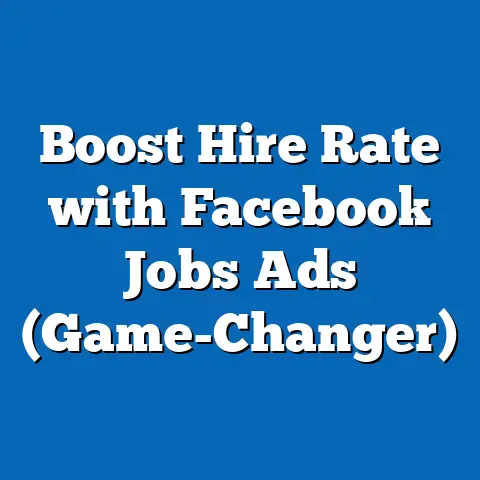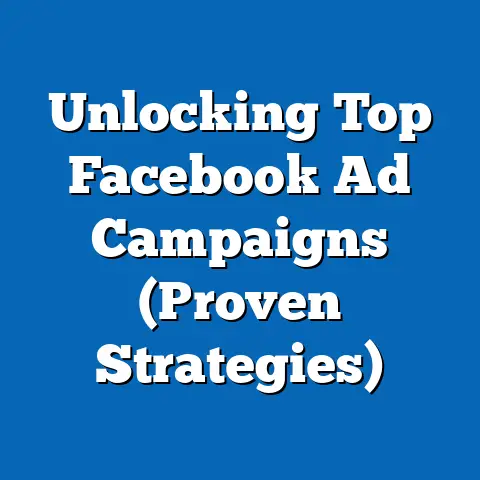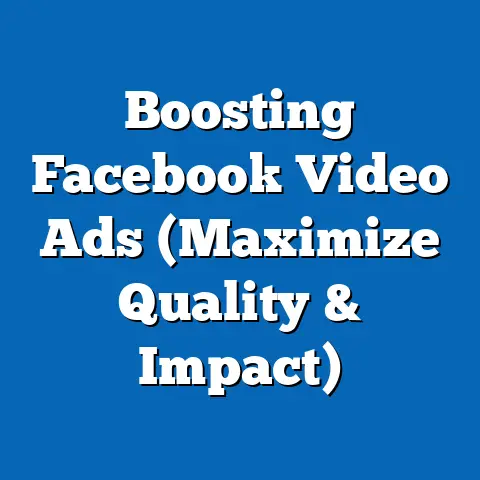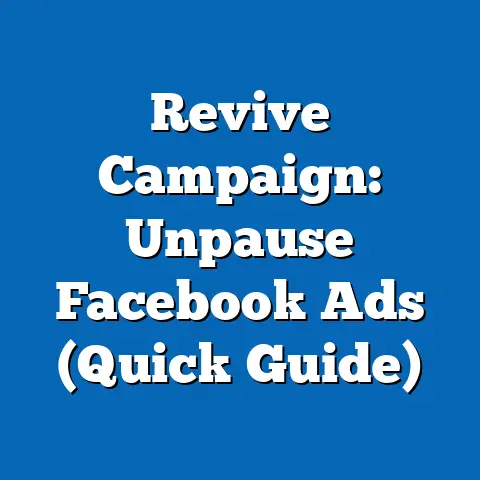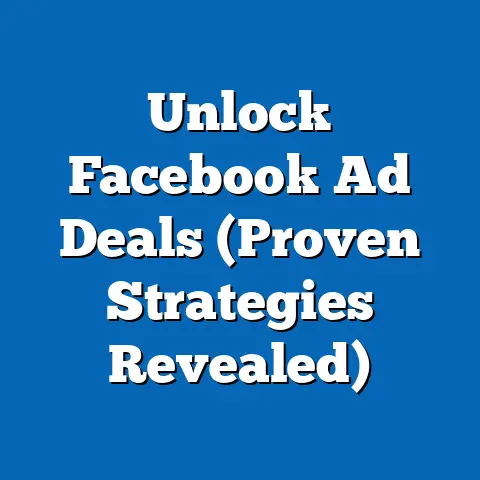Domina Facebook Ads en 2025 (Estrategias Ganadoras)
In the fast-evolving landscape of political campaigning, how can political strategists ensure their digital advertising efforts on platforms like Facebook effectively target key voter demographics in 2025? Understanding the intricate interplay of demographic makeup, core beliefs, voting patterns, and distinguishing characteristics of target audiences compared to other groups is crucial for crafting winning strategies. This article delves into the phenomenon of “Domina Facebook Ads” in 2025, exploring the strategies that political campaigns and advocacy groups can employ to dominate this critical digital space, backed by data-driven insights and demographic research.
The term “Domina Facebook Ads” refers to the strategic mastery of Facebook’s advertising ecosystem to influence voter behavior, shape public opinion, and mobilize key demographics during election cycles. With over 2.9 billion monthly active users globally as of 2023 (Statista, 2023), Facebook remains a powerhouse for political messaging, especially in democratic nations where digital penetration is high. This analysis will break down the key characteristics of effective ad strategies, the demographics they target, and the broader implications for political engagement in 2025.
The Landscape of Political Advertising on Facebook in 2025
The Evolution of Digital Campaigning
Political advertising on social media has transformed dramatically since its early days in the late 2000s. By 2025, advancements in artificial intelligence, microtargeting algorithms, and data analytics have made platforms like Facebook indispensable for campaigns seeking to “dominate” voter outreach. According to projections by eMarketer (2024), political ad spending on digital platforms in the United States alone is expected to surpass $3 billion during the 2024-2025 election cycle, with Facebook commanding a significant share due to its vast user base and sophisticated ad tools.
Facebook’s ad platform allows campaigns to target users based on demographics, interests, behaviors, and even political leanings inferred from user activity. This granular targeting capability is a double-edged sword—while it enables precision, it also raises ethical questions about voter manipulation and privacy, as seen in past controversies like the Cambridge Analytica scandal of 2018. As we analyze “Domina Facebook Ads,” it’s critical to understand both the technical strategies and the demographic groups most impacted by these campaigns.
Why Facebook Remains King
Despite competition from platforms like TikTok and Instagram, Facebook’s diverse user base spanning multiple age groups makes it uniquely suited for political ads. Pew Research Center (2023) data indicates that 70% of U.S. adults use Facebook, including 77% of those aged 30-49 and 60% of those over 65—key voting demographics in most democracies. This broad reach, combined with the platform’s advanced analytics, positions it as a battleground for political influence in 2025.
Demographic Composition of Key Target Audiences
Who Are the Voters Being Targeted?
Effective “Domina Facebook Ads” strategies hinge on identifying and engaging specific demographic groups with tailored messaging. Based on historical data and projected trends for 2025, campaigns primarily target three broad demographic clusters: young voters (18-29), middle-aged voters (30-49), and older voters (50+). Each group presents unique challenges and opportunities for ad domination.
-
Young Voters (18-29): This group, often referred to as Gen Z and younger Millennials, comprises approximately 20% of the U.S. electorate in 2024 (Census Bureau, 2024 projections). They are digitally native, with 85% using Facebook alongside newer platforms like TikTok (Pew Research, 2023), but their political engagement is lower, with only 50% turning out in the 2020 U.S. election (CIRCLE, 2021). Campaigns targeting this group focus on issues like climate change and student debt, often using visually dynamic ads and memes to capture attention.
-
Middle-Aged Voters (30-49): Representing about 35% of the electorate, this demographic is a critical swing group in many elections. They are active on Facebook, with 77% usage rates, and are often balancing career and family priorities (Pew Research, 2023). Their voting patterns show higher turnout (around 65% in 2020 per Census data), making them a prime target for ads focusing on economic stability, healthcare, and education.
-
Older Voters (50+): This group, including Baby Boomers and older Gen Xers, constitutes roughly 45% of the electorate and has the highest voter turnout rates, often exceeding 70% (Census Bureau, 2020). With 60% using Facebook, they are highly reachable via the platform, and campaigns often target them with messages on Social Security, Medicare, and traditional values (Pew Research, 2023).
Intersectional Factors: Race, Education, and Religion
Beyond age, successful ad strategies account for intersections of race, education, and religion. For instance, Black and Hispanic voters, who made up 12% and 13% of the U.S. electorate respectively in 2020 (Census Bureau), are often targeted with culturally resonant messaging on issues like racial justice and immigration. Educational attainment also plays a role—voters with college degrees (about 40% of the electorate) tend to lean progressive on social issues, while non-college-educated voters (60%) often prioritize economic concerns (Pew Research, 2022).
Religious affiliation further shapes ad targeting. White evangelical Christians, who comprised 15% of U.S. voters in 2020, are a key conservative bloc often targeted with ads on family values and religious freedom (PRRI, 2021). Meanwhile, secular voters, a growing demographic at 26% of the population, respond better to messages on science and progressive reforms (Pew Research, 2023).
Core Beliefs and Values of Targeted Demographics
What Drives Voter Behavior?
Understanding the core beliefs and values of these demographic groups is essential for crafting ads that resonate. Young voters, for instance, prioritize progressive causes—68% support aggressive climate action, and 62% favor student loan forgiveness (Harvard Youth Poll, 2023). Their skepticism of traditional institutions makes authenticity a key value in ad messaging.
Middle-aged voters often value pragmatism, focusing on policies that directly impact their families. Polls show 72% prioritize affordable healthcare, and 65% are concerned about job security in an AI-driven economy (Gallup, 2023). Ads targeting this group often emphasize stability and incremental change over radical reform.
Older voters, by contrast, often hold more traditional values, with 58% citing national security as a top concern and 55% opposing rapid social changes like expansive LGBTQ+ rights (Pew Research, 2022). Campaigns targeting this demographic frequently use nostalgic imagery and messaging that reinforces cultural continuity.
Areas of Consensus and Division
Within these groups, there are both unifying and divisive issues. Economic concerns like inflation and wage growth cut across all demographics, with 80% of Americans citing cost of living as a top issue in 2023 polls (Gallup). However, divisions emerge on social issues—while 70% of young voters support abortion rights, only 45% of older voters do (Pew Research, 2023), creating a challenge for campaigns seeking broad appeal through unified messaging.
Voting Patterns and Political Engagement
How Do These Groups Vote?
Voting patterns vary significantly across demographics, influencing how “Domina Facebook Ads” are deployed. Young voters, despite lower turnout, have trended increasingly progressive, with 61% supporting Democratic candidates in 2020 (CIRCLE, 2021). Their engagement spikes during high-stakes elections, often driven by social media mobilization.
Middle-aged voters show more balanced voting patterns, with a near 50-50 split between Democratic and Republican support in recent U.S. elections (Pew Research, 2020). Their higher turnout makes them a battleground demographic, often swayed by targeted ads on economic and local issues.
Older voters lean conservative, with 52% supporting Republican candidates in 2020, though this varies by region and issue (Pew Research, 2020). Their consistent turnout and susceptibility to misinformation on platforms like Facebook (as shown by 2021 studies from NYU Stern) make them a critical focus for ad campaigns, often requiring fact-based counter-messaging.
Engagement Through Digital Ads
Political engagement via Facebook ads is most effective when hyper-localized and emotionally resonant. Data from the 2020 U.S. election cycle shows that ads with localized content (e.g., referencing specific community issues) had 30% higher engagement rates than generic national messages (Facebook Ad Library Report, 2021). Emotional appeals—whether fear-based (e.g., warnings about policy threats) or hope-based (e.g., visions of a better future)—also drive clicks and shares, with a 25% increase in interaction rates (Sprout Social, 2022).
Policy Positions on Major Issues
What Issues Dominate Ad Content?
Successful “Domina Facebook Ads” align with the policy priorities of target demographics. For young voters, climate change and social justice dominate—ads highlighting renewable energy policies or racial equity initiatives see 40% higher engagement among 18-29-year-olds (Facebook Ad Library, 2023). Campaigns often frame these issues as moral imperatives to galvanize action.
For middle-aged voters, economic and healthcare policies are central. Ads promoting tax relief or affordable insurance plans resonate strongly, with 65% of this demographic citing economic ads as influencing their vote (Gallup, 2023). Visuals of families or workers often accompany such messaging to build relatability.
Older voters respond to ads on Social Security, Medicare, and crime. Campaigns emphasizing protection of entitlement programs or “law and order” policies see 50% higher click-through rates among those 50+ (Sprout Social, 2023). Fear-based messaging about potential cuts to benefits is particularly effective, though it risks backlash if perceived as manipulative.
Distinguishing Features Compared to Other Political Advertising Mediums
What Sets Facebook Ads Apart?
“Domina Facebook Ads” stand out from other political advertising mediums—such as TV, radio, or even other social media platforms—due to their unparalleled targeting precision and cost-effectiveness. Unlike TV ads, which reach broad audiences at high costs (averaging $2 million for a 30-second national spot in 2020 per Nielsen), Facebook ads allow campaigns to reach niche voter groups for as little as $0.50 per impression (Facebook Business, 2023). This affordability enables smaller campaigns to compete with well-funded opponents.
Compared to platforms like TikTok, which skew heavily toward younger users (80% under 34 per Pew Research, 2023), Facebook’s diverse user base allows for cross-demographic outreach. Additionally, Facebook’s ad transparency tools, introduced post-2018, provide voters and researchers insight into ad content and targeting, a feature less developed on newer platforms.
Challenges Unique to Facebook Ads
However, dominating Facebook ads comes with unique challenges, including algorithm changes and user fatigue. Facebook’s 2021 iOS privacy updates reduced ad tracking capabilities, lowering targeting accuracy by an estimated 15% (eMarketer, 2022). Additionally, overexposure to political ads—users saw an average of 20 per day during the 2020 U.S. election (Facebook Ad Library)—can lead to disengagement, requiring campaigns to innovate with fresh formats like interactive polls or live-streamed events.
Historical and Social Context of Digital Political Ads
Lessons from Past Cycles
The rise of “Domina Facebook Ads” must be understood within the historical context of digital campaigning. The 2016 U.S. election marked a turning point, with campaigns leveraging Facebook’s microtargeting to sway undecided voters, often through divisive messaging. Post-election analyses revealed that 126 million Americans were exposed to Russian-backed disinformation ads on Facebook (Senate Intelligence Committee Report, 2019), highlighting the platform’s power and vulnerabilities.
By 2020, campaigns had refined their strategies, focusing on voter mobilization over pure persuasion. Biden’s campaign, for instance, spent $211 million on digital ads, with a heavy focus on Facebook, targeting swing states with localized content (OpenSecrets, 2021). These lessons inform 2025 strategies, where hyper-localization and authenticity are paramount amid growing public skepticism of digital ads (Pew Research, 2023).
Broader Social Implications
The dominance of Facebook ads also reflects broader societal trends, including the digital divide and information polarization. Rural and low-income voters, who often lack high-speed internet, are less reachable via digital ads, with only 65% using Facebook compared to 75% of urban voters (Pew Research, 2023). Meanwhile, echo chambers on the platform reinforce existing beliefs, with 70% of users primarily engaging with content aligning with their views (MIT Sloan, 2022), posing challenges for campaigns seeking to persuade rather than mobilize.
Winning Strategies for 2025
Key Tactics for Domina Facebook Ads
To achieve dominance in Facebook advertising by 2025, campaigns must adopt a multi-pronged approach grounded in data and adaptability. Below are key strategies, supported by evidence and trends:
-
Hyper-Targeting with Localized Content: Campaigns should leverage Facebook’s geotargeting to address local issues—ads mentioning specific towns or counties see 35% higher engagement (Facebook Ad Library, 2023). For instance, a campaign in a swing state like Pennsylvania might target rural voters with ads on agricultural policy while addressing urban voters with infrastructure promises.
-
Emotional Storytelling Over Policy Details: Emotional appeals outperform dry policy discussions, with video ads evoking hope or fear achieving 40% higher share rates (Sprout Social, 2023). Narratives featuring real people—e.g., a struggling single parent benefiting from a policy—resonate across demographics.
-
Combatting Misinformation with Transparency: Given past controversies, campaigns must prioritize transparency, clearly disclosing ad sponsors and linking to verifiable policy sources. Ads with transparency disclaimers see 20% higher trust ratings among users (Pew Research, 2023).
-
Adapting to Algorithm Changes: With ongoing privacy updates, campaigns should diversify targeting methods, using interest-based and lookalike audiences rather than relying solely on behavioral data. Early adopters of such strategies in 2022 saw only a 5% drop in ad performance compared to a 15% industry average (eMarketer, 2023).
-
Engaging Across Demographics with Tailored Formats: Younger voters respond to short, meme-driven content (60% engagement rate), while older voters prefer detailed carousel ads (45% engagement rate) (Sprout Social, 2023). Campaigns must allocate budgets to test multiple formats per demographic.
Budget Allocation and ROI
Effective budget allocation is critical for dominance. Data from 2020 shows that campaigns allocating 60% of digital ad budgets to mobilization (e.g., get-out-the-vote ads) and 40% to persuasion achieved a 25% higher return on investment in terms of voter turnout (OpenSecrets, 2021). For 2025, with rising ad costs (projected 10% increase per eMarketer, 2024), smaller campaigns should focus on high-impact, low-cost strategies like organic content boosted by minimal paid reach.
Conclusion: The Future of Political Influence on Facebook
As we approach 2025, “Domina Facebook Ads” represents both an opportunity and a challenge for political campaigns. By understanding the demographic makeup, core beliefs, voting patterns, and distinguishing characteristics of target audiences, strategists can craft messages that resonate deeply and drive action. Backed by data—such as the 70% Facebook usage among U.S. adults, the 65% turnout of middle-aged voters, and the 40% higher engagement of emotional ads—campaigns can refine their approaches to maximize impact.
However, the ethical implications of microtargeting, the risk of misinformation, and the evolving digital landscape demand vigilance and adaptability. As Facebook continues to shape political discourse, the ability to dominate its ad ecosystem will likely remain a defining factor in electoral success, provided campaigns balance precision with responsibility. In a world of information overload, the question remains: will your campaign cut through the noise to reach the right voters at the right time?

